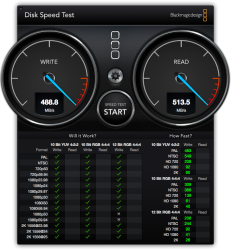Now that my new(to me) mac is in my possession, I am sitting here working out what upgrades will actually do me some good and what I can do with out. An SSD boot drive is on the must have list. I was just about to decide on a 480 gig from OWC then I figured why not a pair of 240's in raid zero. If I'm willing to run with software raid the price difference isn't enough to be bothered. Now for the million dollar question. ( as you can tell I don't know squat about raid)
when choosing between software raid and a physical controller card what should I be concerned with and why?
when choosing between software raid and a physical controller card what should I be concerned with and why?


